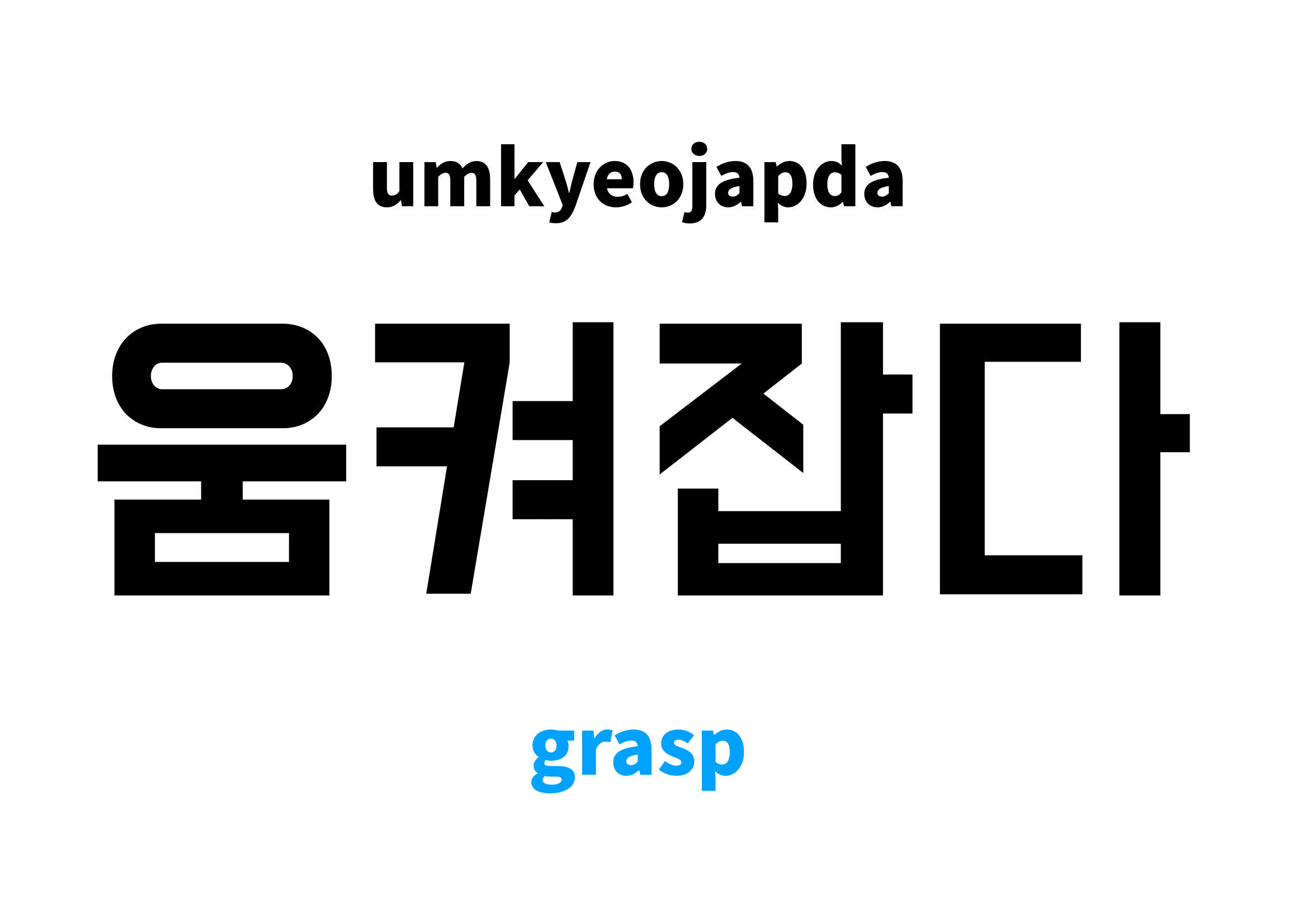 grasp in Korean is 움켜잡다. For examples, you can use like [움켜잡은 옷자락, 머리카락을 움켜잡다]. In this post you will learn how to pronounce and use 움켜잡다 along with examples.
grasp in Korean is 움켜잡다. For examples, you can use like [움켜잡은 옷자락, 머리카락을 움켜잡다]. In this post you will learn how to pronounce and use 움켜잡다 along with examples.
Basics
| Word | Part | Chinese | Sound |
| 움켜잡다 | verb | — | 움켜잡따 |
움켜잡다 Meaning
| Meaning | Explanation |
| grasp; grip; seize | To hold something tight by clenching one’s fists. |
How to Conjugate 움켜잡다
① Formal High (합니다체)
| Present |  움켜잡습니다 움켜잡습니다 |
| Past |  움켜잡았습니다 움켜잡았습니다 |
| Past Perfect |  움켜잡았었습니다 움켜잡았었습니다 |
| Future |  움켜잡을 것입니다 움켜잡을 것입니다 |
| Condition |  움켜잡겠습니다 움켜잡겠습니다 |
② Informal High (해요체)
| Present |  움켜잡아요 움켜잡아요 |
| Past |  움켜잡았어요 움켜잡았어요 |
| Past Perfect |  움켜잡았었어요 움켜잡았었어요 |
| Future |  움켜잡을 것이에요 움켜잡을 것이에요 |
| Condition |  움켜잡겠어요 움켜잡겠어요 |
③ Informal Low (해체)
| Present |  움켜잡아 움켜잡아 |
| Past |  움켜잡았어 움켜잡았어 |
| Past Perfect |  움켜잡았었어 움켜잡았었어 |
| Future |  움켜잡을 것이야 움켜잡을 것이야 |
| Condition |  움켜잡겠어 움켜잡겠어 |
④ Formal Low (한다체)
| Present |  움켜잡는다 움켜잡는다 |
| Past |  움켜잡았다 움켜잡았다 |
| Past Perfect |  움켜잡았었다 움켜잡았었다 |
| Future |  움켜잡을 것이다 움켜잡을 것이다 |
| Condition |  움켜잡겠다 움켜잡겠다 |


Comments